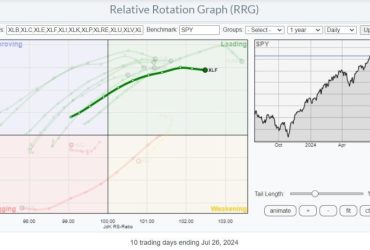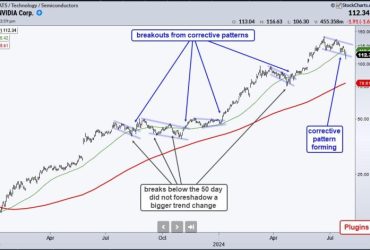Historical and seasonal performance data indicate that the Utilities and Consumer Staples sectors can be effective growth instruments, particularly in March. Technical analysis of the current price action for Utilities Select Sector SPDR Fund (XLU) and Consumer Staples Select Sector SPDR Fund (XLP) supports the thesis that these sectors are poised for growth, offering traders potentially favorable entry points for capitalizing on this seasonal trend.
If the best defense is a strong offense, then sometimes the most effective offense is a defensive tactic used offensively (as Napoleon did when he used the divisional square tactic in the Battle of the Pyramids). It’s a matter of proper placement and timing.
The same can be said when it comes to shifting growth vs. defensive tactics in your trades. Specifically, this article focuses on exploiting the Utilities and Consumer Staples sectors as growth instruments. It’s a matter of timing.
Exploiting Seasonal Growth Opportunities Using Defensive Sectors?
This article takes its queue and slight diversion from Tom Bowley’s insightful article, where he discusses the risk-on and risk-off environment, comparing XLU and XLP with the “ultra-aggressive” Technology Select Sector SPDR Fund (XLK), a Tech sector proxy. Bowley makes a compelling and balanced case to consider risk and caution as the current bull market continues to reach new heights.
This piece takes a bit of a diversion. Here’s the argument: From a seasonality perspective, March is XLU’s best month for growth and XLP’s second-best month for growth. In short, these two defensive plays happen to bring out their most aggressive characteristics (on a seasonal basis) in the month of March.
XLU’s 10-Year Seasonal Performance Against the S&P 500
CHART 1. 10-YEAR SEASONALITY CHART OF XLU VS S&P 500. Against the broader market, March is XLU’s strongest month.Chart source: StockCharts.com. For educational purposes.
On average and over 10 years, the Utilities sector (XLU) has outperformed the S&P 500 with an 89% higher-close rate and a 2.9% average return in March. Looking at all 12 months, you will not find a better-performing month than March.
XLP’s 10-Year Seasonal Performance Against the S&P 500
CHART 2. 10-YEAR SEASONALITY CHART OF XLP VS S&P 500. March is XLP’s second-strongest performance against the S&P following December.Chart source: StockCharts.com. For educational purposes.
On average, over 10 years, XLP has outperformed the S&P 500 with a 56% higher-close rate and a 1.3% average return in March. The average higher-close and return rates are strongest in December, but March is XLP’s second-best performing month.
Using “Safe” Plays as a “Bold” Move
Similar to the analogy mentioned above—using a defensive tactic to achieve an aggressive outcome—might it be prudent to shift trading focus to a “caution play” to get ahead of the broader market? Historically and seasonality-wise, this has played out well on average in the last 10 years, but whether the odds are in your favor this year really depends on the whims of market sentiment and whether you can find a sensible entry point in the current price environment.
After all, March is only a few days away.
XLU’s Price Action Now
CHART 3. DAILY CHART OF XLU. The swing chart makes directionality and entry/exit points clear.Chart source: StockCharts.com. For educational purposes.
The last two lower lows in January and February coincided with a rise in buying pressure, as indicated by the Money Flow Index (MFI), which you can also think of as a volume-weighted RSI. The bullish divergence between declining prices and increasing buying pressure foreshadowed this month’s price rise.
If you take a look at the ZigZag lines, you can see the swing points that define the trend. So, if XLU reverses course and rises to fulfill its seasonality-based projection, it would have to break above the two swing highs (see green dotted lines) at $62.25 and $62.62 to break the current downtrend. It would also have to stay above the most recent swing low (see red dotted line) at $59.15.
If you want to go long XLU, a break above $62.25 on high momentum might be a favorable entry point.
XLP’s Price Action Now
CHART 4. DAILY CHART OF XLP. Just sailing with no clouds in sight? Otherwise, a seemingly boring chart.Chart source: StockCharts.com. For educational purposes.
Consumer Staples (XLP) appears to be chugging along rather serenely. Looking at the Relative Strength Index (RSI), XLP is neither overbought nor oversold. It’s just there in the middle. To get a clearer and volume-weighted reading, look at the Money Flow Index (MFI), which shows pretty much the same thing but with a slight upward tilt, indicating a slight rise in buying pressure.
The chart plots a trendline to show the main trend plus a Kumo (Ichimoku Cloud) for secondary context. Based on all of these readings, XLP gives every indication that it’s heading higher. So, if you’re looking to go long XLP to take advantage of its seasonality-based expectations, getting in a position near the trendline, say, $73.50 might be a favorable spot. You don’t want to see price fall below the trendline, and a close below $72.36, its most recent swing low, would likely invalidate the bullish thesis.
The Bottom Line
The strategic exploitation of Utilities (XLU) and Consumer Staples (XLP) sectors for seasonality-based opportunities is an interesting case in which you’d use defensive tools to seek growth. The timing, as with all trades, is crucial, and the coming month of March, historically the strongest for these sectors, offers a unique window for this strategy. Of course, seasonality is never a sure thing, so if you’re planning on pursuing this opportunity, be ready to exit upon the first indications that this season might not follow historical patterns.
Disclaimer: This blog is for educational purposes only and should not be construed as financial advice. The ideas and strategies should never be used without first assessing your own personal and financial situation, or without consulting a financial professional.








